Rec Sports
Youth say use of juvenile confinement breaks law
Douglas County leads statewide increase Juvenile facilities began reporting quarterly room confinement data to the Nebraska Legislature after senators passed Legislative Bill 894 in 2016. Since then, the Office of Inspector General of Nebraska Child Welfare has compiled data in an annual report, which is provided to the Legislature. That four-person office investigates incidents and […]
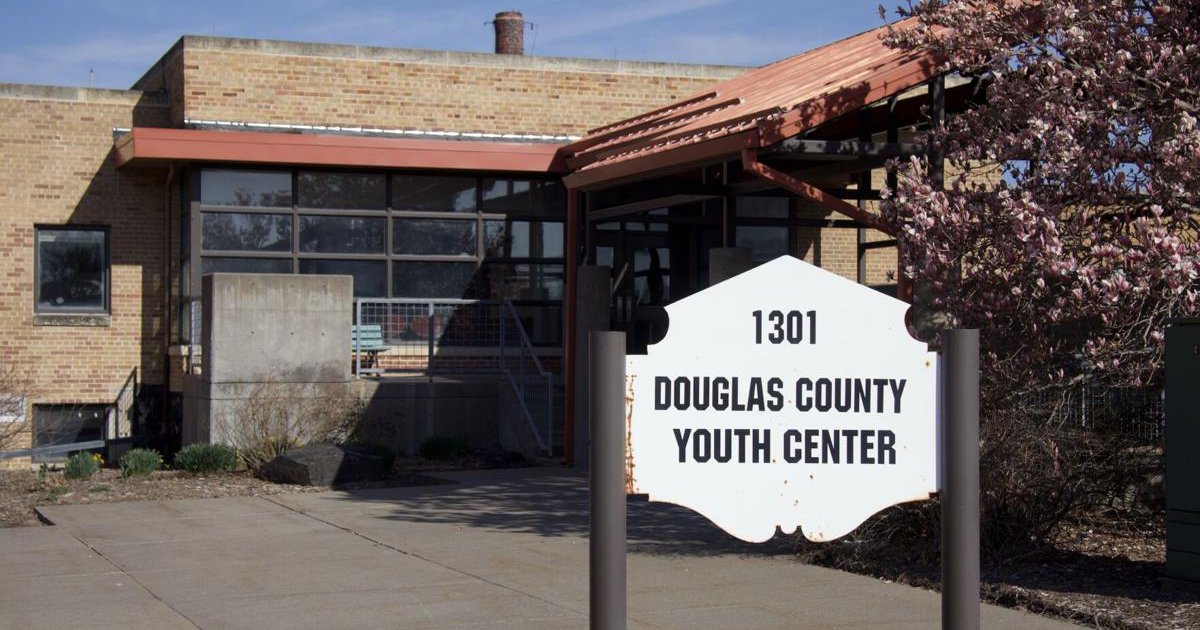
Douglas County leads statewide increase
Juvenile facilities began reporting quarterly room confinement data to the Nebraska Legislature after senators passed Legislative Bill 894 in 2016. Since then, the Office of Inspector General of Nebraska Child Welfare has compiled data in an annual report, which is provided to the Legislature. That four-person office investigates incidents and misconduct in the entire state’s child welfare and juvenile justice systems.
The 2023-24 facility data revealed “concerning trends” in room confinement use, according to the report. Compared to the previous year, there was a 110% increase in total confinement hours and a 48% increase in total confinement incidents.
“Based on the data alone, it appears that these increases are contrary to Nebraska law,” the report said.
Seven of the eight juvenile facilities in Nebraska reported increases in confinement hours, including the Douglas County Youth Center. It alone was responsible for 57% of the total 119,300 confinement hours, according to the report, meaning youth at the Omaha facility spent a combined total of nearly 8 years in confinement.
Douglas County is Nebraska’s largest county by population.
The center also holds youth in confinement for the longest of any Nebraska facilities, the 2023-24 report shows.
Douglas County Youth Center’s average incident time was 145 hours and 42 minutes, or roughly six days, which is the longest average in Douglas County’s history, dating back to 2016 when record keeping began.
‘Making it all worse’
The increases in confinement use raise alarm bells for youth advocates like Anahí Salazar, policy coordinator at the nonprofit Voices for Children. Salazar said the data leads her to believe that facilities aren’t following current law.
“If you’re using it as a timeout, then a young person doesn’t need to be in there for six hours,” Salazar said.
Facilities are also required to report the reason a youth is in confinement. In 2023-24, Douglas County reported that 221 room confinement incidents were used to address fighting; another 189 addressed assault or attempted assault.
Salazar said she hopes facilities are working to calm youth before putting them directly in confinement after engaging in aggressive behaviors.
Failing to speak with youth about their behavior while keeping them confined only increases the likelihood they’ll repeat the behavior, she said.
“If you’re not providing that for these young people…within, you know, an hour, two hours, three,” Salazar continued, “then I just think it’s making it all worse.”
The 17-year-old central Omahan, who said he was confined six times, said there aren’t many opportunities for youth to speak with staff about coming out of lockdown.
“We don’t really have much of a voice in it,” he said. “Whatever they say happens. There isn’t really nothing that we can say that’s going to change it.”
Woodard said that while his staff tries alternative methods to resolve issues with youth, confinement is sometimes necessary for safety – especially when violence stems from gang-related issues and conflicts that started outside of the facility.
“A lot of the violence that takes place in the Omaha community is generational,” Woodard said. “It comes from things that have happened years ago.”
If teens get into a conflict over a basketball game, staff can usually help them work it out through conversation, he said.
When a gang-affiliated teen in the facility sees someone they consider an enemy, Woodard said the teen is more determined to cause harm. In these cases, he said, talking things through or using positive rewards often isn’t enough to keep everyone safe.
“If a kid is really angry, they really don’t care about it,” Woodard said. “We can only give them so many bags of chips and positive reinforcement.”
‘Really big trigger’ for youth with mental health issues
Over 70% of youth in the U.S. juvenile justice system have mental health conditions, with 30% of those youth having severe conditions, according to The Council of State Governments Justice Center.
Monica Miles-Steffens, compliance coordinator at the University of Nebraska at Omaha’s Juvenile Justice Institute, said it’s important that facilities recognize the psychological impact of confinement.
“Putting a kid in isolation can be really harmful,” Miles-Steffens said. “Especially young people who have mental health concerns.”
In 2024, the American Psychological Association formally opposed the use of “harmful individual isolation” in juvenile facilities and adopted 10 recommendations, several of which Nebraska has already incorporated into state law, such as documenting its use and using it in a time-limited manner.
Miles-Steffens said facility staff also need to recognize past experiences of youth, such as trauma during childhood.
“Some of these kids with crossover issues in child welfare, they were removed from their families because of very traumatic neglect and abuse situations where they might have been placed in isolation for extended periods of time,” Miles-Steffens said. “It can be a really big trigger for those kids in that trauma.”
System crossover is common. A 2021 study led by criminologist Denise Herz found that two-thirds of youth involved in Los Angeles County’s justice system had previously interacted with the child welfare system.
Tarika Daftary-Kapur, a researcher at Montclair State University in New Jersey, has focused her work on juvenile justice and adolescent decision making.
Research shows that confinement can have lasting mental harm on young people, she said.
“Solitary or room confinement for children, and even adults, for long, sustained periods of time can lead to depression, it can lead to anxiety,” Daftary-Kapur said. “Because they have higher levels of developmental vulnerability…they are at an even heightened risk of having these sorts of adverse reactions.”
Educational access limited
Nebraska law requires juveniles in confinement to have the same access to education as the general population.
Douglas County Youth Center’s daily schedule includes classes in the morning and afternoon, during which teachers instruct youth in person and through learning packets.
The central Omaha teen said teachers were his favorite staff.
“They’ll sit there and talk to you about anything,” he said.
During a 30-day period he spent on lockdown, he said he didn’t interact with teachers or fill out the daily packets, because he wasn’t allowed a pencil in his cell.
Christine Henningsen, associate director of Nebraska’s Center on Children, Families and the Law, previously worked as a public defender in Douglas County. She said staff at the Douglas County Youth Center have told her that youth in confinement aren’t allowed to leave their rooms for classes.
“If you’re in room confinement, what I was told is you’re not let out, but you can listen (to teachers) at the window,” Henningsen said. “And you could knock on the window and hold up a worksheet and try and get feedback from the teacher from the other side of your door.”
Douglas County Youth Center provides additional reading materials to youth through its library services, but the Bennington teen said the library is unavailable to youth while in lockdown.
“You got to just hope somebody will go get a book for you,” he said. “And then hope it can fit under the door.”
Each situation is handled individually, Woodard said. Teens who write on the walls or make weapons with pencils may get items taken away, he said.
“There’s way more factors than this just being simple,” Woodard said.
Family visits
The law also states that youth in confinement must have the same access to visits with legal guardians.
However, the Douglas County Youth Center’s website specifies that youth in “restrictive housing” are only allowed to have visits in the facility’s admissions area, and these visits may be restricted from an hour to 30 minutes due to “space availability.” Youth who are not in confinement receive two one-hour visits each week, according to the facility’s website.
The main visitation area, the North Omaha teen said, has multiple tables and vending machines, and multiple youth are able to have visits at a time. He said the admissions visit area is only large enough for one youth and two visitors at a time.
“In the other room, it’s like the cell,” the 16-year-old said.
Youth in confinement are strip-searched before a family visit, which the central Omaha teen said doesn’t occur with general population visits.
“A lot of kids would miss out on their visit, because they know they’re going to get strip-searched,” he said.
The Benson teen said strip searches are typically only used when youth first arrive at the facility. During his time in confinement, he said he passed up multiple visits with family to avoid going through the experience.
“Some people might not be comfortable with it,” he said. “There may be trauma behind it.”
The North Omaha teen said certain staff members made him feel especially uncomfortable during those searches.
“I don’t know if a strip search is supposed to go like that, but they just get to looking all at you and stuff,” he said.
Woodard said youth in confinement are strip-searched after visits because these visits happen in a room that is not supervised by staff, nor is the room monitored with a camera. Strip searches are necessary to prevent contraband from entering the facility, he said.
“We already have parents who are in regular visitation who are bringing in contraband,” Woodard said.
The Nebraska Crime Commission, a state government agency, defines a strip search as “an examination of a resident’s naked body for weapons, contraband, injuries or vermin infestations,” and the commission’s juvenile standards say all searches shall be the least intrusive type necessary for a facility’s safety. A pat search, with clothes on, should be the initial way to search youth, according to the juvenile standards.
Advocates: More oversight needed
Reflecting on her previous work as a public defender, Henningsen said she wasn’t fully aware of the prevalence of room confinement before the annual reports started in 2016.
“Looking back, I wish it was something I would have been regularly asking my clients about, but it was not anything that anyone even talked about,” Henningsen said.
Mandating the annual reports was a step in the right direction in holding facilities accountable to the law, she said.
“That, in and of itself, I think dramatically reduced the amount it was used, because they’re like, ‘Oh, somebody’s looking at it,’” Henningsen said.
While the inspector general for Nebraska’s adult prisons conducts regular in-person facility visits, the child welfare inspector general relies on self-reported facility data when creating the juvenile room confinement report.
“We don’t have the authority right now to go in and say, ‘When there was this confinement, what really happened?’ and make sure it was a safety and security reason,” said Jennifer Carter, the state’s inspector general for child welfare. “We’re just looking at what the facilities are self-reporting.”
Rec Sports
Troy University
TROY, Ala. – Troy Cheer is hosting a pair of youth clinics this fall, prior to the Troy Football games against Nicholls (Aug. 30) and on Homecoming against Arkansas State (Nov. 1). Open for all youth ages 5-12; participants will receive a ticket to the game, a pregame cheer clinic with the Troy Cheerleaders, […]
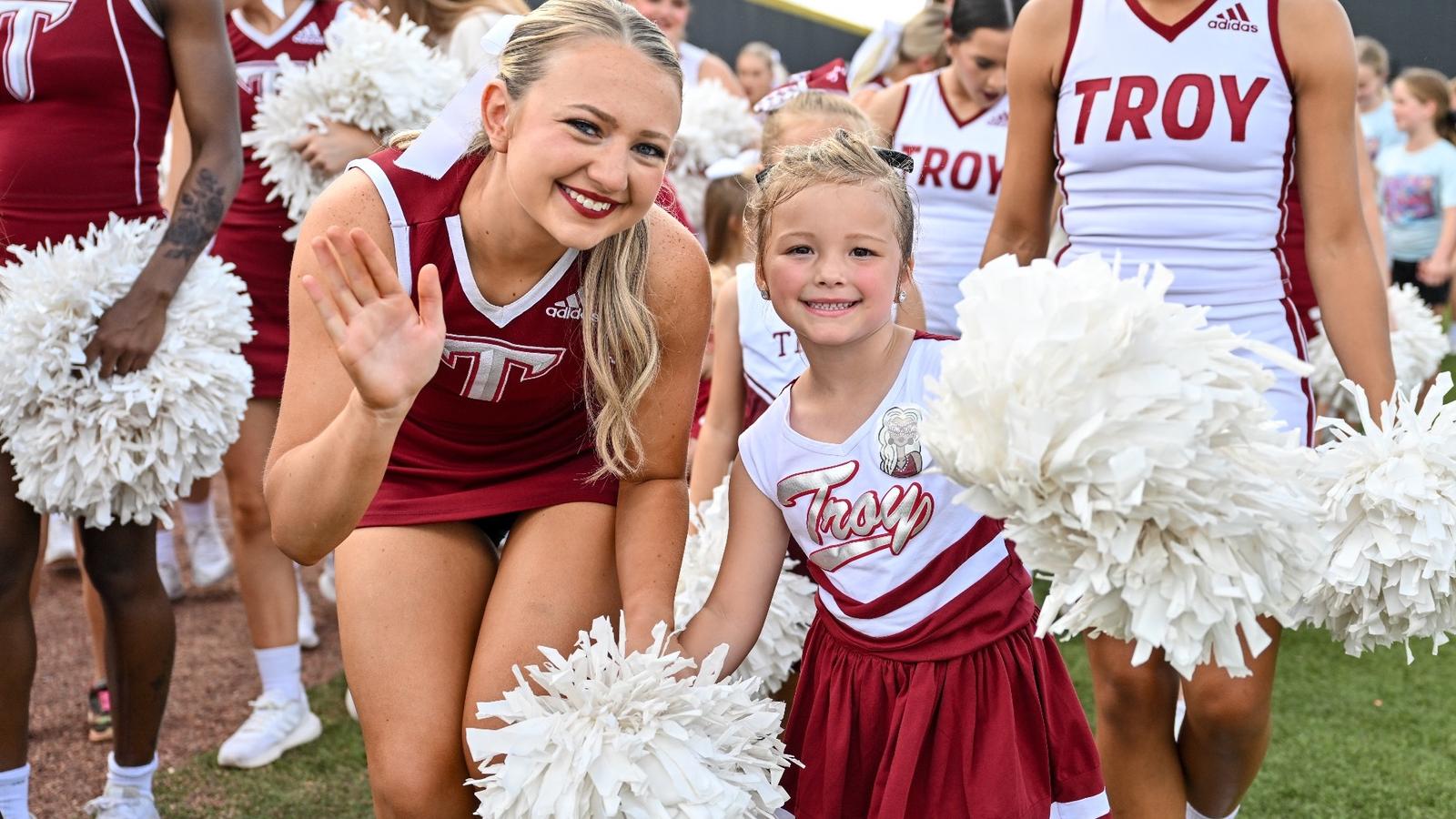
TROY, Ala. – Troy Cheer is hosting a pair of youth clinics this fall, prior to the Troy Football games against Nicholls (Aug. 30) and on Homecoming against Arkansas State (Nov. 1).
Open for all youth ages 5-12; participants will receive a ticket to the game, a pregame cheer clinic with the Troy Cheerleaders, partake in Trojan Walk, take part in an on-field performance with the Troy Cheerleaders and receive a 2025 Cheer Clinic T-shirt (must register by Aug. 8 and Oct. 10, respectively, to receive t-shirt).
Registration is $35 for each clinic and family members of participating children can purchase discounted tickets to the games for just $10. To register, visit TroyTrojans.com/CheerClinic or contact Chris Weil at 334-808-6747 or cweil@troy.edu.
Rec Sports
Becker Youth Baseball Going To Bat To Replace Destroyed Equipment Shed
(KNSI) – Becker’s youth baseball organization is swinging for the fences as it tries to rebuild an equipment shed following a July 4th arson incident. A person lit off fireworks inside portable toilets at both Kolbinger Park and the Becker Athletic Complex, causing them to catch fire. In one instance, it spread to a nearby […]
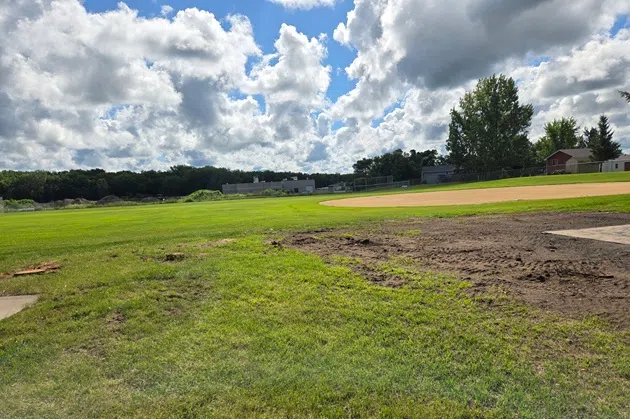
(KNSI) – Becker’s youth baseball organization is swinging for the fences as it tries to rebuild an equipment shed following a July 4th arson incident.
A person lit off fireworks inside portable toilets at both Kolbinger Park and the Becker Athletic Complex, causing them to catch fire. In one instance, it spread to a nearby shed. Becker Youth Sports Association Board Member Joy Sherwood says the crime affects the city’s youngest players the most. “We store some items above the BAC complex right there, and then we have another shed up on top of the hill too. So, the complex here is the junior ball for tee ball and coach pitch. Everything for them was in there, and that was gone.”
A GoFundMe campaign has been launched to help raise funds for replacing the shed. It is at about 80% of its $6,500 goal. Sherwood and the board have also gotten advice from the St. Cloud Rox and other outside organizations about grants for the project.
The hope is to maximize funding, as the incident occurred at the worst possible time. Sherwood explains that the shed was full. “Because of all the rain, we ended up doing our Tee Ball Jamboree and Coach Pitch Skills Competition the first and second. So, the coaches handed in all their equipment on the second…so everything got put back into the shed.”
Sherwood says discussions are ongoing between her organization and the city regarding the location of a replacement building. The old one was located right next to the ball fields. There are options that are safer and away from people, but that would make it more difficult to get the gear to the diamond.
___
Copyright 2025 Leighton Media. All rights reserved. This material may not be broadcast, published, redistributed, or rewritten, in any way without consent.
Rec Sports
Lincoln nonprofit hosts basketball tournament to raise awareness for youth mentorship
A Lincoln nonprofit is hosting a basketball tournament Friday in an effort to connect at-risk youth to mentoring, training and community engagement. The Honesty Project works to empower kids considered at-risk to make smart decisions and reach success through these resources. “This event isn’t a tool to help them get out of the mindset,” said […]
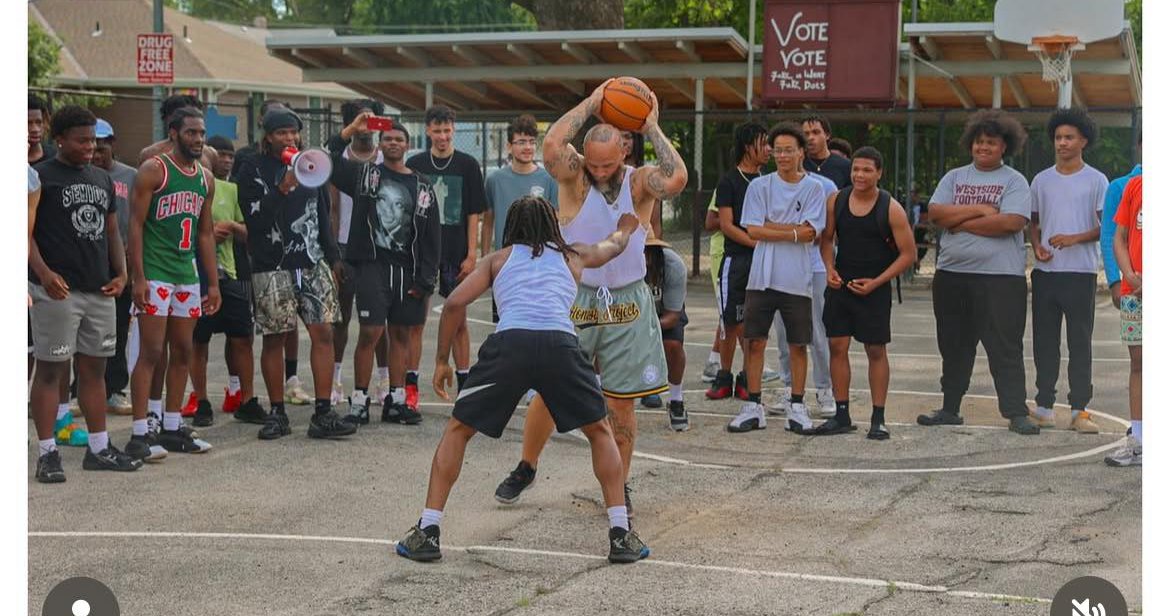
A Lincoln nonprofit is hosting a basketball tournament Friday in an effort to connect at-risk youth to mentoring, training and community engagement. The Honesty Project works to empower kids considered at-risk to make smart decisions and reach success through these resources.
“This event isn’t a tool to help them get out of the mindset,” said Clay Anders, Honesty Project founder and executive director. “It’s the aftercare that’s going to help them get out of that mindset. This is just the tool to reel them in so they can see what it is we offer, and then that’s where we continue the aftercare and the mentorship.”
The games and dunk contest will feature Lincoln and Omaha teams, big-name Husker players and social media influencer Cam Wilder.
“They won’t show up for a lecture, but they’ll show up for a social media influencer. And when that social media influencer is somebody I’m able to talk with and be cool with and organize something with, then it gives validity to what I’m doing and what I’m saying,” Anders said.
The tournament is at the Sandhills Global Event Center in Lincoln and is free to attend. Anders will choose two crowd members to play against the social media celebrity Wilder.
According to the Kids Count in Nebraska 2024 report, nearly 8,000 youths were arrested last year.
This is the second time Anders has invited Wilder to an event. Last summer, a “park takeover” basketball game in Lincoln drew more than 1,000 people and forced Lincoln Police to ask crowd members to leave. The Honest Project organized the setup this year to turn the event center into a basketball court with the help of some of its students and trustees from the Lancaster County Detention Center.
Rec Sports
MLS ecosystem gives youth soccer players lots of opportunities
Tyler Adams urges growth after USMNT’s loss to Mexico in Gold Cup Final USMNT Captain Tyler Adams breaks down what went wrong in their Gold Cup Final loss to Mexico. Sports Seriously Alfonso Mondelo was 13 years old when he arrived in the United States from Spain in 1971. “Soccer was almost nonexistent,” he tells […]

Tyler Adams urges growth after USMNT’s loss to Mexico in Gold Cup Final
USMNT Captain Tyler Adams breaks down what went wrong in their Gold Cup Final loss to Mexico.
Sports Seriously
Alfonso Mondelo was 13 years old when he arrived in the United States from Spain in 1971.
“Soccer was almost nonexistent,” he tells USA TODAY Sports. “You had to go chase it.”
Your desire to see the sport might take you to New York’s Felt Forum, the then-named auditorium at Madison Square Garden where Mondelo watched the 1974 World Cup on a closed-circuit television, or to movie theaters.
Even by 1990, Major League Soccer’s longtime technical director says, when the U.S. men qualified for the tournament in Italy, you went to a bar with a satellite dish to watch them.
“If there was a baseball game, you had to fight with the baseball people to keep the soccer game on,” Mondelo says. “So this has gone to where this is the country that consumes probably the most soccer in the world. Right now, you can turn on a TV on Saturday morning at 7 o’clock, begin to watch European games and continuously watch live soccer until probably 12:30, 1 o’clock in the morning, when MLS finishes.
“It’s a sport that you can play forever. Every day, there are more American-born fans, and I would say under the age of 40 in this country, most players have played it at one level or the other.”
Mondelo, 66, spent time on the pitch in Spain’s second division while he was in the U.S. Air Force and later became a coach. He got his start as a coach in MLS with the New York/New Jersey MetroStars in the late 1990s. He moved to his position in the league’s front office in 2004, when teams had no youth programming.
Today, there are 40,000 kids participating in its MLS GO recreational program and almost 18,000 enrolled in its elite MLS NEXT platform (raising to 40,000-plus with a new competition tier), which runs from the U13 to U19 levels.
As of June 15, according to MLS, 93% of the players on U.S. youth national teams are coming from MLS NEXT. This year alone, the league also has invested more than $125 million in player development, according to Mondelo.
“It’s the greatest sport in the world,” says Mondelo, whom we interviewed upon the 30th anniversary of MLS. “Once you start playing it, you get hooked on it. If you speak soccer, you can engage conversations in any country in the world. I think the Americans are catching onto it. …
“A young player who begins to play the game and has a passion for it can see a direct pathway from youth all the way to a professional team. Now, in a lot of the markets, they have a professional team that they can go see and they can aspire to be part of.”
The league realizes, of course, the overall percentages of becoming a professional player are very small. It’s constantly seeking ways to get more kids access to the game, hoping to create fans at the grassroots levels who will attend MLS matches.
Where might your son or daughter fit into MLS’ youth ecosystem? Here are the opportunities it provides:
MLS GO: Finding a lifelong love of the game
When we place our kid in a sport at a young age, a goal is they enjoy it and want to come back for another season.
“We’re not trying to create world-class players from the time of 5 or 6 years old,” says Kyle Albrecht, the general manager of MLS GO and MLS NEXT.
MLS GO is designed to teach fundamentals to boys and girls from 4 to 14 – sometimes playing in games together – in a community setting. It’s in 47 states and Washington D.C., and, if you’re in an MLS market, tickets to a pro game might be included with your entry fee.
Albrecht says the median age of an MLS GO player is 7 or 8 but it’s open to beginners throughout its age groups.
“It also gives that opportunity at the higher end of the spectrum,” Albrecht says. “Let’s say that individual player is not ready to go into the youth travel environment (with) more competitive aspects that we know have a tendency to drive kids and families out of the game.”
MLS GO, Albrecht says, was born in 2023 out of data that registered soccer participation wasn’t really growing over the past 20-plus years.
“There was a real intentionality about the push to travel too early, (the) cost growing so high at young ages. How do we build a program to combat that negativity with the game becoming too intense for that recreational audience?” Albrecht says.
MLS NEXT: Seeking your highest potential
Kids with more ambitious sports aspirations can try out for clubs within MLS NEXT starting at the U13 level. There are 29 MLS academies and 238 elite academies within the 267 clubs (including the second tier of competition) that make up MLS NEXT.
MLS NEXT academy teams compete in high-level events such as Generation Adidas Cup. The GA Cup began almost two decades ago as a gauge to evaluate how MLS academy teams were developing across the country and then started to bring in international competition.
“When we first started there, it was hard to compete,” Mondelo says. “The foreign teams were beating us; we got a draw, we felt that that was a positive result. And over the last 10, 15, years, we’re seeing that the MLS teams in some age groups are dominating the competition, so we are getting to be close to a world-level par in player development.
“Also, the interest of international clubs on the players that are being developed domestically has risen tremendously. So they’ve seen the American player as a viable option to bring into top-level clubs worldwide.”
MLS NEXT came about in 2020, taking over when the U.S. Soccer Development Academy ended operations. There are 130 NEXT players who have matriculated to MLS. They include Diego Luna (Real Salt Lake), Benjamin Cremaschi (Inter Miami CF), Alex Freeman (Orlando City SC), Obed Vargas (Seattle Sounders FC) and Cavan Sullivan (Philadelphia Union).
MLS NEXT top-tier players agree to forgo participating simultaneously in both MLS NEXT and high school soccer, according to an MLS spokesperson, though clubs can submit a high school waiver and play. Players in the other tier will be allowed to play it.
“Our objective from a player development strategy is to develop the next generation of talent that will affect the pro game, and the pro game includes Major League Soccer, it includes national teams,” Luis Robles, MLS NEXT’s technical director, told USA TODAY Sports in January, when laying out the parameters of the second tier. “But within that object is another sub tier of, ‘How does that play itself out?’ We saw an opportunity to deepen the player pool, to give more families that experience. … So it is the aspirational athlete, but it’s also just the athlete that wants to continue to play soccer with their friends. So it is a combination of everyone.”
The 29 lead academies offer scholarships, housing and schooling, but players at the non-MLS academies, which MLS refers to as elite academies, are given looks and opportunities to move up within the organization. These chances include trials at MLS academies, talent ID camps or sometimes guest appearances for the clubs at competitions like the GA Cup.
There are coaching and travel costs associated with elite academies, though Albrecht says MLS NEXT clubs try and look at providing financial aid where it might be needed.
“We try and get every player in MLS NEXT to reach their highest potential,” Albrecht says. “That may mean it’s Division 1 or Division III college. We’re hosting our MLS NEXT Fest event in December and that’s going to be the biggest college recruiting event in youth soccer.”
MLS NEXT Pro: Completing the path
MLS determined as it began to build its youth programs that it lacked qualified coaching compared to other parts of the world. It started working with the French Federation to develop courses.
In addition, all 30 MLS clubs have state-of-the-art training facilities where their MLS NEXT academy teams train. (San Diego FC academy is just getting off the ground and not competing in MLS NEXT yet.)
“Without a doubt, I think in the next few years, we’re going to see a world-class player emerge here that will be comparable to what’s coming out of any other country in the world,” Mondelo says.
MLS NEXT players who advance along the path toward MLS might also get the chance to participate in MLS NEXT Pro, a men’s league in the USA and Canada. MLS NEXT Pro might also include international players, older collegiate graduates and others who may not have played in MLS NEXT.
Since the launch in 2022, MLS teams have signed more than 160 players from this polishing stage.
More opportunities for girls
MLS NEXT is a boys competition but member clubs can invite girls to play on their teams. USWNT players Alyssa and Gisele Thompson, for example, played on an U19 MLS NEXT team.
MLS NEXT announced in December it had formed an alliance with the Girls Academy. According to MLS, the Girls Academy has 114 clubs and more than 16,000 players (including 48 clubs that have a boys team in MLS NEXT) from the U13 to U19 age groups.
“We’re in very regular contact with the leadership team at Girls Academy, just in terms of what are those touch points that we can add value – whether it be through events, through different coaching education initiatives, things we can do to really align that development,” Albrecht says.
The GA Cup, which Mondelo spearheaded for MLS, had a girls division for the first time in 2025. Girls Academy Red beat Girls Academy Blue in the U16 final. Their division also included FC Bayern (Germany) and Manchester City FC (England).
Initial plans, Albrecht says, have looked at expanding the girls division to allow for additional Girls Academy teams as well as international teams.
“I would not be surprised if we start seeing some of our (professional) clubs begin to develop the youth academies on the women’s side,” Mondelo says of MLS.
The future: ‘Best is yet to come’
According to MLS, MLS NEXT players have represented 32 different youth national teams around the globe in 2025. Players from 56 MLS NEXT clubs (277 players in all) have been called up to youth national teams this year.
Albrecht predicts a half-million-plus players participating in MLS GO in the years following the 2026 World Cup next summer.
Five decades ago, Mondelo says, it was strictly immigrants who would go out and watch soccer. During the most recent men’s World Cup (held in Qatar in 2022), he noticed in New York City the bars were not only full, but people were outside on the street looking inside to try to see the game.
“Americans want to be winners and want to have a team that wins,” Mondelo says. “So as our national team goes, I think we’re very nationalistic. That will also continue in this constant growth of the sport. …
“I think a lot of credit has to be given to the ownership groups in MLS, the investment that has been made in these facilities, not only for the first team, for the pro team, but for these academies, has really brought us to the next level.
“The reward will be when we start seeing these American players becoming the mainstay of MLS clubs. So ideally, the mid-level players and above will be domestically grown players, and then the influx of the internationals will be truly the superstars that will elevate this league. Major steps have been taken in 30 years, but the best is yet to come.”
Steve Borelli, aka Coach Steve, has been an editor and writer with USA TODAY since 1999. He spent 10 years coaching his two sons’ baseball and basketball teams. He and his wife, Colleen, are now sports parents for two high schoolers. His column is posted weekly. For his past columns, click here.
Got a question for Coach Steve you want answered in a column? Email him at sborelli@usatoday.com
Rec Sports
Burbank Boys & Girls Club Of Burbank Offers Basketball For Members And Non-Members
By Rick Assad Better together is a motto for the Boys & Girls Club of Burbank and Greater East Valley and it also applies to the sport of basketball. It’s always fun and special when playing with people you know, and it is for youngsters ages six through 18. “We try to create an environment […]


By Rick Assad
Better together is a motto for the Boys & Girls Club of Burbank and Greater East Valley and it also applies to the sport of basketball.
It’s always fun and special when playing with people you know, and it is for youngsters ages six through 18.
“We try to create an environment per Boys and Girls Club values, where we promote and encourage belonging, integrity, respect, inclusion, empowerment in an environment where they feel less pressure and a place to naturally grow without pressure,” said Mike Graceffo, a longtime coach of numerous sports in Burbank.
The youngsters don’t have to be members of the Boys & Girls Club or live in Burbank to play the game of basketball because it’s open to anyone and everyone.
There are three levels of play offered by the Boys & Girls Club and the first is the Most Valuable Player Youth Basketball which meets every Tuesday. There is a $10 fee that can be paid at the door.
The time for this session is 6:15 p.m. to 7:15 p.m. and is available for first graders through the 12th grade.
Graceffo will oversee this level and if parents are interested, they can contact him at mikegraceffo@bgcburbank.org.
The next level is Her Hoops which is for girls exquisitely and is offered every Wednesday.
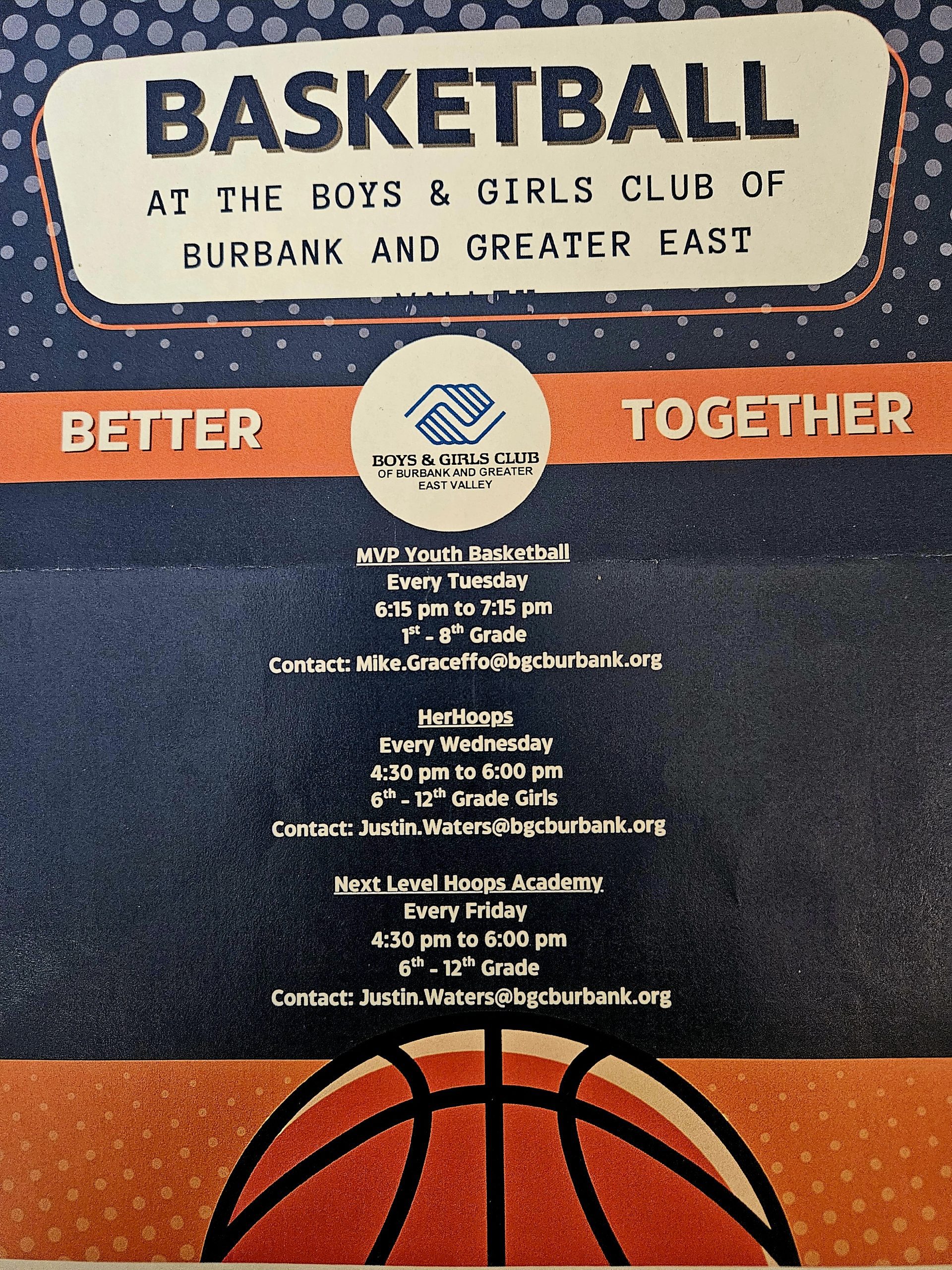
It runs from 4:30 p.m. through 6 p.m. and is for young ladies that are in the sixth grade through 12th grade.
For those interested in having their child play hoops they can contact Justin Waters at justin.waters@bgcburbank.org.
And lastly, the Next Level Academy is available every Friday and the time is 4:30 p.m. to 6 p.m. and is for sixth graders through 12th grade. Waters is also in charge of this level.
There are numerous coaches, staff and volunteers that will make the players’ time fun playing basketball and include Rashawn Morris, Brandon Baker, Sayahn Mudd, Keonte Terrell, Levi Johnson, Fred Orr and Jeffrey Dumas.
“The one thing all these guys have in common is their passion, commitment, love of kids and basketball, and wanting to instill life lessons and core values,” Graceffo said.
Knowing how to shoot, pass, dribble, rebound and play defense are key elements in playing basketball.
But it takes time to perfect these skills. Plus, it’s vital to enjoy what you’re doing.
“I don’t want to speak for the other coaches but I would think we all have the same goals in mind,” said Graceffo, “and that is to make it fun for the kids, teach them the proper way to play the game, introduce them to the proper fundamentals, get them ready for higher levels of basketball if they choose that route, and also incorporate life lessons.”
Graceffo then added: “And we all emphasize the importance of being a great student-athlete and being a good person,” he continued.
Playing the game well and enjoying yourself makes basketball even more fun.
“I feel the best and most fun part is seeing the enthusiasm when the players see that they are improving,” Graceffo noted. “Also, the interaction between the players when they get to bond and become somewhat of a team. And the most rewarding part is when a player comes up to us and tells us that they made a particular team or did something well in a game.”
When Graceffo is in charge of a bunch of eager athletes, he knows what he wants to accomplish.
“Again, every coach is different, but my philosophy has always been to make it a fun and enjoyable experience, encourage them to participate and play, teach them the proper fundamentals, encourage good sportsmanship, and that they can achieve any dream or goal in life if they work hard,” he stressed.
Factoring in skills and the player’s age is important for Graceffo.
“Obviously if I’m coaching highly skilled, older, or highly advanced players, I am going to be more intense, work them harder, teach them more advanced drills, techniques, whereas, if the kids are younger and or just beginning, then I would be more inclined to tailor the practice, drills, to their level,” he acknowledged.
Getting better isn’t easy, and it takes time and patience but with hard work and determination, playing basketball well is possible.
“The biggest thing I try to do is get the kids to understand that if they want to succeed and be a top-tier player, they have to work harder than the next person,” Graceffo said. “And that they cannot just rely on their practices. They need to apply what they are learning and work on their game on their own. I also give them and show them what I call self-help drills that they can do on their own to get better.”
Most importantly, the player has to want to get better. It’s not going to just happen because they like basketball.
“It’s all about motivation and getting these young athletes to understand that the hard work that they are putting in now will pay off later,” Graceffo said.
Rec Sports
Little League® International Launches Text to Give Campaign to Help Support its Tournament Experience and Disaster Relief Efforts
With the start of approximately 340 games on ESPN Platforms kicking off on July 19, Little League® International is excited to announce the launch of its new Text to Give Campaign, giving supporters of the Little League program the chance to step up to the plate to provide the necessary funding to enhance future opportunities […]
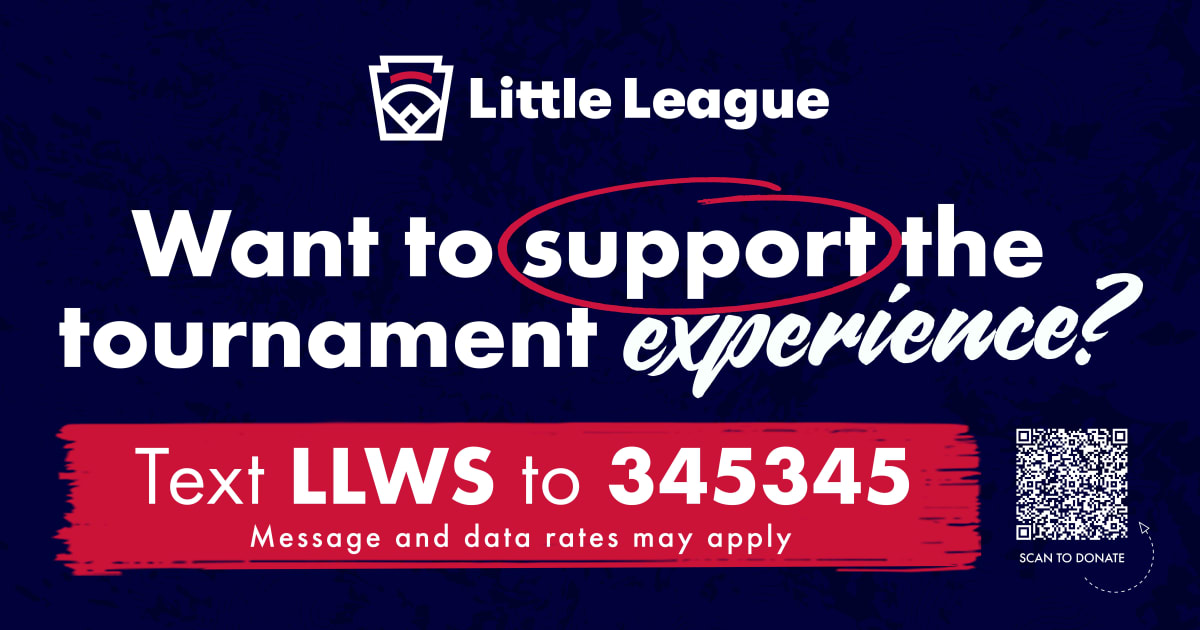

With the start of approximately 340 games on ESPN Platforms kicking off on July 19, Little League® International is excited to announce the launch of its new Text to Give Campaign, giving supporters of the Little League program the chance to step up to the plate to provide the necessary funding to enhance future opportunities and experiences at the Little League World Series as well as Little League International’s Disaster Relief efforts for its local leagues and communities.
“For nearly a century, we have been trusted to positively impact communities all around the world, but we still have so much work to do in order to bring the benefits of participating in youth sports to more children and families,” said Pat Wilson, Little League President and CEO. “Through our centralized philanthropic efforts, we can help tackle the diverse challenges and seek new opportunities in an effort to expand our reach and support programs that provide direct resources to local leagues, participants and families, and local communities. While we have terrific partners, including ESPN, and we are extremely grateful for their support, our philanthropic efforts like this new Text to Give campaign will allow us to complement the support we receive from our corporate partners and bring the added level of enhanced support that our local leagues, volunteers, and communities deserve.”
Running through September 15, 2025, the Text to Give campaign is focused on two key strategic initiatives of the organization’s Philanthropic efforts:
Little League World Series Tournament Experience (Text LLWS to 345345)

Funds raised through this campaign are dedicated to enhancing all resources in the Little League program and creating new opportunities for participants and their families, from supporting local leagues to enhancing the tournament experience all the way through our seven World Series events. Each year, Little League International pays for the housing, travel for international and domestic teams, meals, and accommodations for all teams who compete at all seven World Series tournaments. The cost of operating all of Little League’s Region Tournaments and the seven World Series Tournaments totals more than $12.5 million annually, with the Little League Baseball® World Series in Williamsport costing approximately $7.5 million alone, as part of Little League’s overall annual operating budget. Ranging anywhere from $5,000 to $60,000, the average cost to travel teams to the LLBWS each year is approximately $30,000 per team while the average cost to run a U.S. Region Tournament (both Baseball and Softball) each year, is approximately $450,000. In Williamsport alone, there have been a total of 11,025 players across 811 teams competing in the 77 years of the Little League Baseball World Series. The organization continues to look for ways to enhance the overall experience for not only the players, coaches, and umpires, but for all fans and families who make the bucket-list trip to the birthplace of Little League each summer.
Disaster Relief Support (Text RALLY to 345345)

Year over year, Little League continues to see local leagues experience devasting effects from natural disasters. Funds raised through this campaign are focused on helping programs impacted by disaster to receive the support they need to rebuild, recover, and continue providing children with the life lessons learned through youth baseball and softball. Whether it’s repairing fields or replacing equipment, the Disaster Relief Fund allows Little League to provide support to local communities during times of greatest need. Unfortunately, disasters occur every year in communities all around the world, and the Little League fields are many times the first place that families and neighborhoods turn to.
Throughout the course of the Region and World Series tournaments in 2025, the Text to Give campaign will showcase a variety of informational assets, including on-site signage, digital advertisements, social media efforts, and a PSA that will air across ESPN Platforms.
As a mission-driven nonprofit, Little League’s revenues are used to not only fund the service-driven operations to nearly 5,500 leagues and 1 million volunteers worldwide, but to also extend benefits like grant funding, volunteer training and experiences for kids to experience the Little League baseball and softball program.
Little League Baseball, Incorporated is a 501(c)(3) tax-exempt organization, and every donation is tax-deductible to the extent allowed by law. To learn more about Little League’s overall philanthropic efforts, including what has been already done to date and what you can do to support, visit LittleLeague.org/Impact.
-

 Motorsports2 weeks ago
Motorsports2 weeks agoWhy Cosmetics are Making Up for Lost Time in Women’s Sports
-

 Motorsports2 weeks ago
Motorsports2 weeks agoTeam Penske names new leadership
-

 Youtube2 weeks ago
Youtube2 weeks ago🚨 BREAKING: NBA MVP Shai Gilgeous-Alexander signs the RICHEST annual salary in league history
-

 Sports1 week ago
Sports1 week agoNew 'Bosch' spin
-

 Sports1 day ago
Sports1 day agoVolleyball Releases 2025 Schedule – Niagara University Athletics
-

 Sports1 week ago
Sports1 week agoE.l.f Cosmetics Builds Sports Marketing Game Plan Toward Bigger Goals
-

 College Sports2 weeks ago
College Sports2 weeks agoMSU Hockey News – The Only Colors
-

 Fashion3 weeks ago
Fashion3 weeks agoUSA vs. Ireland FREE LIVE STREAM (6/29/25)
-
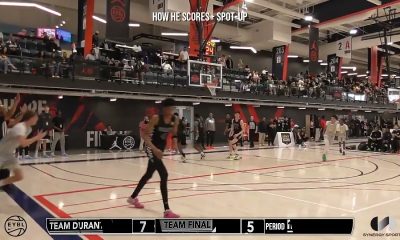
 College Sports3 weeks ago
College Sports3 weeks agoIU basketball recruiting
-

 College Sports5 days ago
College Sports5 days agoBuford DB Tyriq Green Commits to Georgia





























